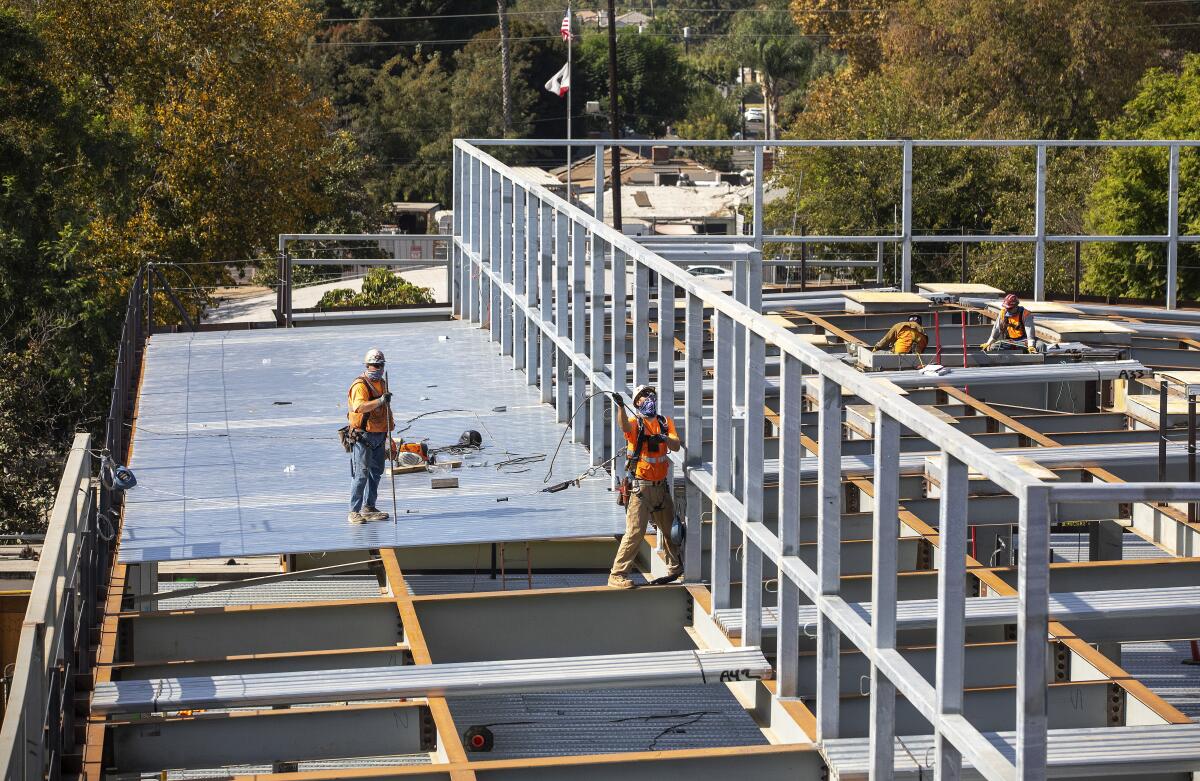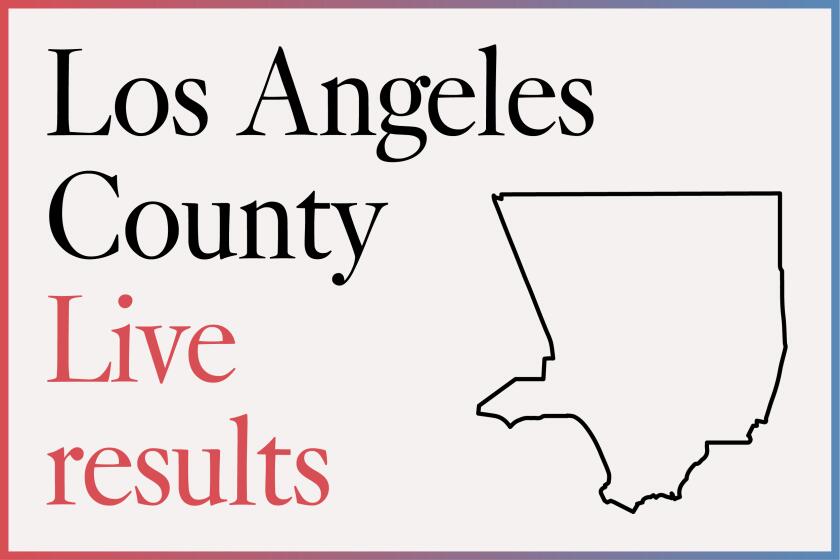LAUSD Measure RR ends dry spell in raising taxes for schools

- Share via
Los Angeles school officials on Tuesday revived an irresistible formula from the past in winning passage of Measure RR, a $7-billion bond to modernize campuses in California’s largest school system.
The formula is: Find a presidential election in which motivated Democrats turn out in large numbers.
It worked in 2008 when Angelenos amassed to put Barack Obama in the White House. And it worked in 2020, when Angelenos cast votes en masse, most hoping to remove President Trump.
In 2008, the $7-billion Measure Q won 69% of the vote; in 2020, $7-billion Measure RR won nearly 71% in “semiofficial” results posted Wednesday by the county registrar’s office. The bond measures needed 55% of the vote to pass.
But between 2008 and Tuesday things hadn’t gone so well. Two local tax measures for L.A. schools had failed. And in March, a statewide school bond also went down to defeat.
L.A. schools Supt. Austin Beutner was at the helm of the district for the last two setbacks. On Wednesday, it was his turn to be elated.
“The students are the real winners today — this victory is theirs,” Beutner said in a statement. “Because of voter support, and the support of labor, business and community leaders, more students will get access to safe and updated schools and learning technology.”
“We acted boldly during these uncertain times by placing Measure RR on the ballot, knowing we needed to continue to address needs in school facilities,” he added. “We are grateful voters overwhelmingly supported this effort.”
All along supporters of Measure RR had reason for optimism — there was no significant opposition campaign and the November electorate was expected to be more tax friendly.
A long list of projects includes ceilings, bus purchases, new air conditioners and seismic retrofits. Also on the list are mobile computers and other technology. Money also could be used to pay for a portion of the district’s response to the COVID-19 pandemic — although officials hope that funding for this purpose will come from elsewhere.
To make the bond tax more appealing — and less noticeable — L.A. Unified officials structured the overall tax rate for schools to remain about where it is now, through 2034, before the tax rate begins to taper off over the following 20 years. The annual property tax payment for schools during that peak period would be about $140 per $100,000 of assessed property value. This figure would include Measure RR and other previously passed bonds that taxpayers are still paying off.
Liberal Democrats and Gov. Gavin Newsom supported Proposition 15, while California’s largest businesses strongly opposed it.
The share of that tax bill resulting from Measure RR by itself would work out, on average, to $22 a year per $100,000 of assessed property value.
The Measure RR tax rates are linked to the assessed value of residential and commercial properties. Measure RR proceeds, instead of going to the district’s general fund — where they could be used, for example, to pay for teachers and nurses — would pay for construction and facilities-related purchases. This kind of bond typically fuels the construction industry, and business and labor groups united in support.
“The district did its homework, conducted outreach and took the time to answer questions from key stakeholders, including the business community,” said Matthew N. Klink, who helped lead the campaign that defeated Measure EE, the previous L.A. Unified effort in 2019.
Measure EE was a parcel tax that would have especially affected large commercial property owners, who funded a strong campaign against it. Parcel taxes are typically used to pay for educational services, so, unlike construction bonds, they don’t pump money directly into local companies.
Campaign consultant Yusef Robb, who had worked to pass Measure EE, agreed that Measure RR was a better political bet, and the pandemic — which forced campuses to close in March — may have contributed.
“Measure RR is top of mind because people’s kids are on top of them all day, every day,” Robb said.
The Howard Jarvis Taxpayers Assn. opposed Measure RR as an unfair additional burden, asserting that past bond funds have not been spent efficiently.
What about all that money from the earlier Measure Q?
District officials insist that every dollar is either spent or committed — a big chunk went to buy computers for students after the still-ongoing shutdown of campuses. L.A. Unified says it has about $50 billion in modernization needs — more than enough to consume the entire $7-billion infusion.
More to Read
Sign up for Essential California
The most important California stories and recommendations in your inbox every morning.
You may occasionally receive promotional content from the Los Angeles Times.













